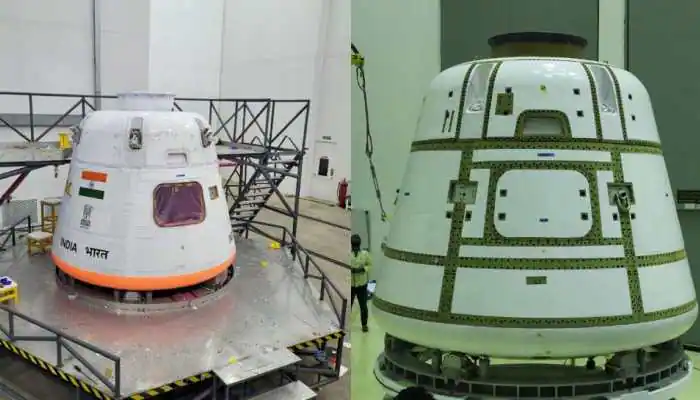The primary purpose of the test flight, known as TV-D1, is to simulate an emergency escape scenario during the launch of the Gaganyaan mission. Specifically, it aims to test the Crew Module’s ability to safely detach from the rocket and execute an emergency landing in the event of a problem during the ascent phase of the mission.
New Delhi: The Indian Space Research Organization (ISRO) is preparing to commence unmanned flight tests for the Gaganyaan mission. Which aims to send a human into space and safely return them to Earth. The Indian space agency stated that preparations for the Flight Test Vehicle Abort Mission-1 (TV-D1), which demonstrates the performance of the Crew Escape System, are underway.
What’s the main purpose of the Test Flight?
The primary purpose of the test flight, known as TV-D1, is to simulate an emergency escape scenario during the launch of the Gaganyaan mission. Specifically, it aims to test the Crew Module’s ability to safely detach from the rocket and execute an emergency landing in the event of a problem during the ascent phase of the mission. This test is crucial for ensuring the safety of astronauts in the event of an unexpected situation during a real Gaganyaan mission.
The Gaganyaan Mission is India’s first mission to send an astronaut into space and safely return them to Earth. The success of this mission paves the way for future space ventures, including sending humans to the Moon or developing the country’s own space station, floating in the vastness of space.
What is a Crew Module?
The Crew Module (CM) is a part of the spacecraft where astronauts stay during the flight. It is designed to provide an “Earth-like atmospheric condition” and protect astronauts from the elements of outer space. Currently, ISRO is in various stages of developing the CM for the Gaganyaan mission.
For the Test Vehicle Abort Mission-1 (TV-D1), the CM is an unpressurized version that has completed its integration and testing. Although it has the same size and mass as it would be in a real flight, it houses all the systems for deceleration and recovery, including a complete set of parachutes, recovery aids, actuation systems, and pyrotechnics. The CM is equipped with extensive instruments to capture flight data for evaluating the performance of various systems. After the CM completes its touchdown in the Bay of Bengal, it will be recovered using a dedicated vessel and a diving team from the Indian Navy.
The first developmental flight, Test Vehicle (TV-D1), is in the final stages of preparation. The Test Vehicle is a single-stage liquid rocket developed for this abort mission. The test aims to simulate Crew Escape in times of an emergency, as the payload of the flight contains the Crew Module (CM) and Crew Escape Systems (CES). The CES with CM will be separated from the Test Vehicle at an altitude of about 17 km. Subsequently, the abort sequence will be executed autonomously, starting with the separation of CES and deployment of a series of parachutes. culminating in the safe touchdown of the CM in the sea, approximately 10 km from the coast of Sriharikota.
ISRO stated that the success of this test flight will set the stage for the remaining qualification tests and unmanned missions, ultimately leading to the first Gaganyaan mission with Indian astronauts.
Like us on Facebook or follow us on Twitter & Pinterest and Instagram and Keep visiting us for Latest News Online.
CREDIT: ZEE NEWS


